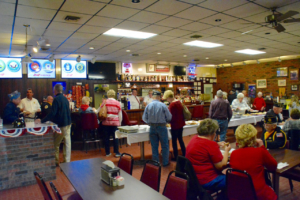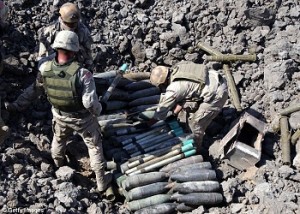Memberships in Veteran Service Organizations on the Decline

By Debbie Gregory.
There appears to be a lack of interest from younger veterans when it comes to joining legacy groups like the AMVETS, Veterans of Foreign Wars (VFW) and the American Legion.
Membership is certainly on the decline with the deaths of WWII, Korean and Vietnam veterans, and as their membership ages and declines, these organizations need young bloods to maintain the political clout they have built up, and they need to be able to “pass the torch” in order to maintain the ground they have gained.
According to the VFW and American Legion, only about 15 percent of Iraq and Afghanistan veterans who are eligible to join their organizations have done so. Don’t these veterans want to be around other veterans?
Of course they do. So why aren’t veterans from more recent conflicts signing up like their parents and grandparents did?
Perhaps the transitioning servicemembers of the Facebook/Twitter/Snapchat/Instagram generation are gravitating towards the groups that they perceive to be a better fit, such as Iraq and Afghanistan Veterans of America, the Mission Continues, and Team Rubicon.
Let’s face it, when most young people think of these groups, they don’t picture many of their peers being present.
So what should the legacy organizations do to reach out and attract younger veterans? First of all, they can communicate via email, vs. snail mail. They can make sure that they are as welcoming to female veterans as they are to male veterans.
Perhaps an updated look with a few flat screen televisions and a fresh coat of paint is in order. They can host events that will attract the younger crowd; out with the Bingo night and in with college fairs, career days, and veteran service officer Q&As.
“A lot of these kids really don’t know what the VFW is,” said one VFW Commander, Robert Webber.
Webber said VFW members reach out to newer/younger veterans every time there is a function or they are out in public.
“We explain to them that we are a family-oriented group and we try to help them,” Webber said. “We have a service officer that can help them with paperwork and medical problems.”
If veterans’ organizations like the VFW and the American Legion want to survive the next twenty years, they need to prioritize women, present a united front pulling from the entire population of veterans and tackle charitable efforts together.
Perhaps if they all joined forces as one group, they would have enough experienced officers, personnel, and funding to tackle their biggest issues. Nobody would be left out of the discussion and everyone would have the ability to help.
Military Connection salutes and proudly serves veterans and service members in the Army, Navy, Air Force, Marines, Coast Guard, Guard and Reserve, and their families.



















